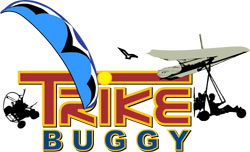

Weight-Shift Control Aircraft Flying Handbook
It introduces pilots to the broad spectrum of knowledge that is needed as they progress in their pilot training. This handbook is for student pilots, as well as those pursuing more advanced sport pilot and private pilot certificates. The Sport Pilot Rule, adopted in 2004, added new kinds of aircraft to the FAA’s registry. When ultralighting began in the US, spawning two-seat ultralights developed for training, machines such as PPCs (powered parachutes) and Trikes (or weight-shift control – WSC) became common. These machines required different pilot inputs than the classic fixed-wing powered machines and gliders. The FAA recognized the need for specialized training, and in 2007 produced Powered Parachute Flying Handbook (FAA-H-8083-29) Now, the Administration has added the FAA Weight-Shift Control Flying Handbook (FAA-H-8083-5), to guide trike pilots through the information required in the knowledge test and WSC pilot and instructor checkrides, necessary to become licensed in this type. This handbook helps explain how these little-understood ultralight-derived aircraft have become practical United States registered (N-numbered) aircraft. As author and instructor Paul Hamilton says, “We now have a national standard to live by, rather than having to rely on different myths and legends that developed and evolved in different areas of the country.” This handbook on Weight-Shift Control machines is similar to the FAA flight handbooks for Airplanes, Gliders, Rotorcraft, and Seaplanes. The FAA Pilot’s Handbook of Aeronautical Knowledge is the companion book for the WSC Flying Handbook, as it is for all categories. The WSC Flying Handbook is comprehensive and applies to the Sport Pilot and Private Pilot, and provides common knowledge areas on how WSC aircraft interact with Airplanes (e.g., traffic patterns, airspace). Hamilton added, "I was able to author the book and obtain expert advice from several industry experts who supplied photos and helped with the most difficult part of the project: explaining the aerodynamics of the WSC flying wing.” That expert input was particularly useful because, “There is little technical data to utilize for the basis for this manual. Additionally, explaining WSC-specific unusual flight situations, such as whip stalls, tuck, tumble -- even how to land in water – all are unique challenges." The book is perfect-bound, 280 pages, featuring top quality printing and glossy photos throughout. It will prove a valuable resource for all trike students, pilots and instructors. Table Of Contents: |
|
|---|
|
DISCLAIMER: Please read and be sure you thoroughly understand this disclaimer before flying a TrikeBuggy. Trike flying is an extremely demanding sport requiring exceptional levels of attention, judgment, maturity and self discipline. It is unlikely that you will be able to participate in it safely unless you make a conscious and continual commitment to your own safety. PPG and Hang Glider Trike flying is a dangerous sport and may result in injury and death even when practiced by a competent pilot using proper equipment. TrikeBuggies are not covered by product liability insurance, nor have they been designed, manufactured or tested to any federal or state government airworthiness standards or regulations. Do not fly them unless you are willing to assume personally all risks in the sport of Trike flying, and all responsibility for any property damage, injury, or death which may result from your use of this TrikeBuggy. Safe operation of the TrikeBuggy requires a pilot proficiency equivalent to that of a BFI (Basic Flight Instructor), as well as an equivalent level of knowledge and understanding of those wind and weather conditions which may compromise the pilot's safe control of the TrikeBuggy. In particular, be advised that gusty winds or turbulent conditions may interfere with even an expert pilot's ability to safely control the TrikeBuggy, and may cause it to crash. Never take anything for granted in Trike Flying. If you are in doubt about anything, stop and figure it out or contact TrikeBuggy. Also please read our Warning and Caution! |